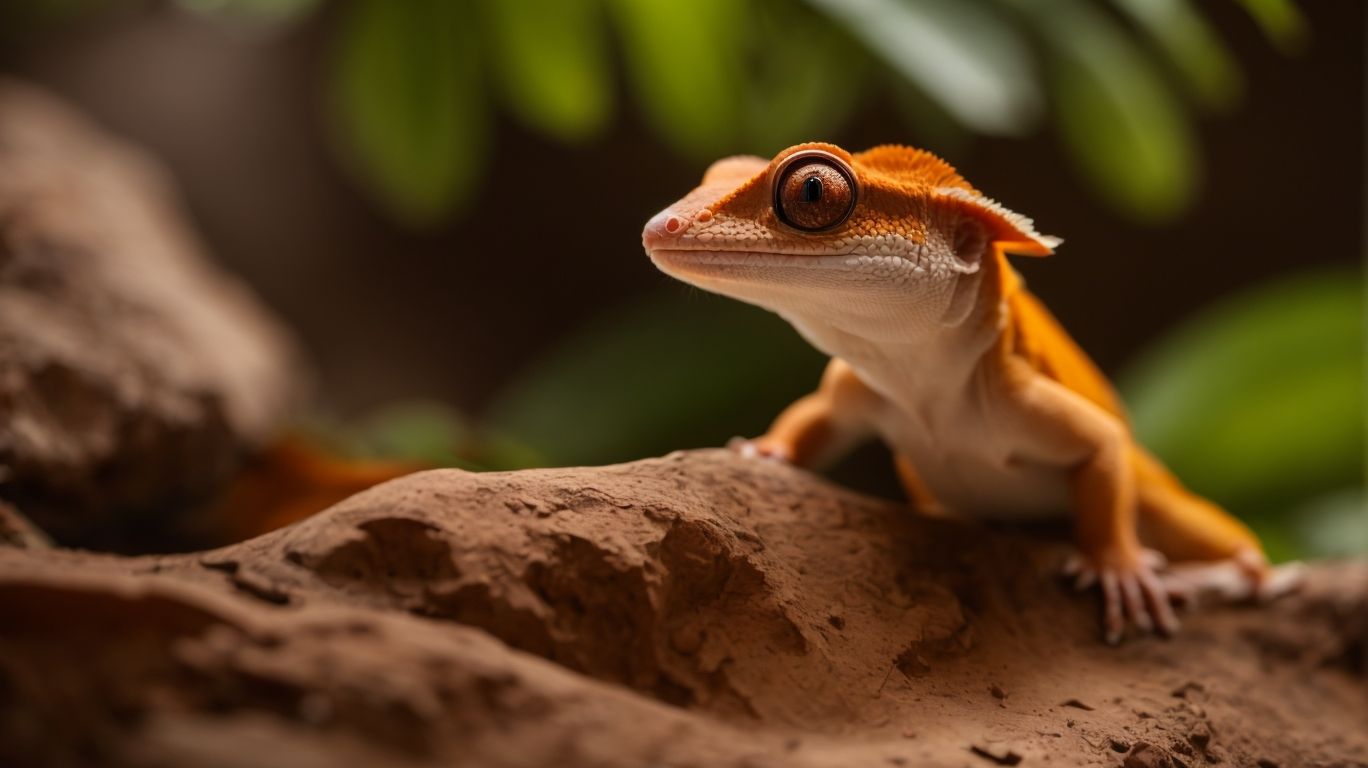
Cuban False Chameleon: Unveiling the Mysteries of this Unique Pet
Table of Contents
The Intriguing Appearance and Adaptations of the Cuban False Chameleon
The Cuban False Chameleon is a captivating reptile that has intrigued pet enthusiasts for decades. This intriguing reptile (Anolis barbatus), is native to the island of Cuba, making it a unique and rare species. Despite its name, the Cuban False Chameleon is not actually a true chameleon, but rather an anole lizard that belongs to the genus Anolis.
First and foremost, the Cuban False Chameleon’s appearance is a sight to behold. With its robust heads, dull gray-brown in color, slow-moving and possess blunt teeth used for crushing snails, and sharp teeth that are used for catching insects, their wild main diet. But what truly sets it apart are the bony casque at the rear of its head and barbel-like scales under its chin. These features are used for protection and camouflage. They be very quick when it comes to feeding and escaping predators.
Another fascinating adaptation of the Cuban False Chameleon is its ability to change color, although not to the same extent as its true chameleon relatives. While it may not be able to match its surroundings with absolute precision, it can still alter its coloration to some extent. This adaptation allows it to camouflage itself to a certain degree and avoid potential predators.
Moreover, the Cuban False Chameleon possesses conical eyes, endowing it with the remarkable ability to move each eye independently. This unique feature provides the chameleon with a 360-degree field of vision, enabling it to vigilantly survey its surroundings for potential threats or prey without the need to reposition its entire body.
Habits and Behaviour of the Cuban False Chameleon
Cuban False Chameleons have unique habits and behaviors that make them fascinating pets. While they may not be the most social or tolerant of handling, they offer a captivating presence in any home. One interesting aspect of their behavior is their territorial nature. These chameleons are known to defend their chosen territory with great fervor, especially the males who engage in territorial battles to assert dominance.
Observing their feeding strategy is also a fascinating experience. Cuban False Chameleons are insectivores and feed primarily on small invertebrates. They also feed on snails, fruits, and flowers. They are agile and quick, often stalking their prey before striking with precision and speed. This hunting behavior showcases their remarkable agility and hunting prowess.
Another aspect of their behavior that owners find intriguing is their reproductive habits. Female Cuban False Chameleons lay eggs in leaf litter or rotten wood. The eggs hatch after about two months, and the hatchlings are independent from birth.
Understanding and appreciating the habits and behavior of Cuban False Chameleons is an important part of being a responsible and informed pet owner. By observing their territorial nature, feeding strategies, and reproductive habits, you can gain a deeper appreciation for the unique characteristics of these captivating reptiles.
Cuban False Chameleon's Diet and Nutrition
When it comes to the diet and nutrition of the Cuban False Chameleon as a pet, there are a few important things to consider. These captivating creatures are insectivores, meaning their diet primarily consists of insects. To ensure their health and well-being, it is essential to provide them with a variety of gut-loaded insects, snails, crickets, waxworms, and dubia roaches. Snails need to be from a safe source with no possible diseases or flavoring.They can also benefit from occasional treats, such as pinky mice, earthworms, or small lizards .
It is important to dust these insects with calcium and vitamin supplements to ensure that your cuban false chameleon is getting the necessary nutrients. This is especially crucial for their bone health and overall development. Additionally, providing a diverse range of insects will help prevent dietary deficiencies and boredom.
In terms of hydration, it is important to mist the enclosure regularly to provide your chameleon with the necessary moisture. You can also provide a water source for them to drink from, such as a shallow dish or a drip system.
Monitoring your chameleon’s appetite and weight is also important. If you notice any significant changes in their eating habits or weight loss, it may be a sign of an underlying health issue and should be addressed with a veterinarian.
Overall, providing a varied and nutritious diet is key to keeping your Cuban False Chameleon healthy and thriving as a pet.
Care & Husbandry of Cuban False Chameleon
Taking care of the Cuban False Chameleon requires careful attention to its specific needs and habitat requirements. These captivating creatures, although not as common in captivity as some other reptiles, can still be kept as pets with proper care and husbandry.
One of the most important aspects of caring for a Cuban False Chameleon is providing the right enclosure. These reptiles are arboreal, meaning they spend most of their time in trees. As such, their enclosure should be vertically oriented with plenty of branches and foliage for climbing and hiding. It should also have adequate ventilation to prevent respiratory issues.
Temperature and humidity are crucial for the well-being of the Cuban False Chameleon. The enclosure should have a temperature gradient ranging from 75-85 degrees Fahrenheit (24-29 degrees Celsius) during the day, with a slight drop at night. The humidity levels should be around 60-70%, which can be achieved by misting the enclosure regularly and providing a humidity hide.
A UVB light is essential for the Cuban False Chameleon to synthesize vitamin D3 and prevent metabolic bone disease. The light should be positioned within the enclosure to provide a suitable basking spot for the chameleon.
Regular health check-ups with a reptile veterinarian are recommended to monitor the Cuban False Chameleon’s overall health and address any potential issues. It is also crucial to provide a clean and sanitary environment for the chameleon to prevent the spread of disease.
By understanding and implementing the proper care and husbandry practices, you can ensure that your Cuban False Chameleon thrives and remains healthy in captivity.
Potential Health Problems of Cuban False Chameleon and Its Solutions
Keeping your Cuban False Chameleon healthy and thriving requires being aware of potential health problems that may arise and knowing how to address them. While these captivating creatures are generally hardy, they can still be susceptible to certain ailments. By staying vigilant and proactive, you can ensure the well-being of your chameleon.
One common health issue for Cuban False Chameleons is dehydration. These reptiles are native to humid forested areas, so it’s important to provide them with adequate moisture in their enclosure. Regular misting of the enclosure and providing a water source for them to drink from will help prevent dehydration.
Another potential health problem is metabolic bone disease. This condition can occur if the chameleon is not receiving enough calcium and vitamin D3. To prevent this, ensure that their diet is properly supplemented and that they have access to a UVB light source. UVB light is essential for their ability to absorb calcium.
Respiratory infections can also be a concern for Cuban False Chameleons. High humidity levels and proper ventilation in their enclosure can help prevent respiratory issues. If you notice any signs of respiratory distress such as wheezing or difficulty breathing, it’s important to seek veterinary care.
Parasites, such as mites or ticks, can also affect Cuban False Chameleons. Regularly inspecting your chameleon for any signs of external parasites and providing routine vet check-ups will help catch and treat any issues early on.
How to Properly Handle Cuban False Chameleon
Properly handling a Cuban False Chameleon as a pet requires a gentle and cautious approach. These creatures are not known for their tolerance of handling, so it’s important to respect their boundaries and minimize stress. Here are some tips for handling your Cuban False Chameleon:
- Approach with Care: When it’s necessary to handle your chameleon, approach them slowly and gently. Avoid sudden movements or loud noises that may startle them.
- Support Their Body: When lifting your chameleon, make sure to support their body properly. Use both hands to create a secure and stable grip, being careful not to apply too much pressure.
- Limit Handling Time: Cuban False Chameleons are arboreal creatures that prefer to spend their time in trees. Limit handling to necessary situations, such as when cleaning their enclosure or taking them to the vet.
- Avoid Handling During Shedding or Stressful Times: During shedding or when your chameleon is stressed, it’s best to avoid handling altogether. Give them space and time to relax and adjust to their environment.
- Wash Your Hands: Before and after handling your chameleon, it’s important to wash your hands thoroughly to prevent the spread of bacteria or potential contaminants.
Remember, while handling may not be a regular occurrence with Cuban False Chameleons, observing and appreciating their behaviors within their enclosure can be just as rewarding. By respecting their natural instincts and providing a comfortable and enriched environment, you can ensure a happy and contented pet.
Final Thoughts on Having The Cuban False Chameleon as a Pet
Having a Cuban False Chameleon as a pet can be an incredibly rewarding and fascinating experience. These enigmatic creatures are not as commonly kept as other reptiles, but they offer a unique and captivating presence in any home. As with any pet, there are important considerations to keep in mind before deciding to bring a Cuban False Chameleon into your life.
First and foremost, it’s essential to understand the specific care and husbandry requirements of these reptiles. Providing the proper enclosure, temperature, humidity, and diet is crucial to their health and well-being. Creating an environment that mimics their natural habitat will help them thrive and display their remarkable adaptations.
Another factor to consider is their temperament and handling. While Cuban False Chameleons are not known for being particularly friendly or tolerant of handling, they can still provide hours of entertainment as you observe their behaviors and interactions within their enclosure. Patience and a hands-off approach are key when it comes to these reptiles.
It’s also important to remember that Cuban False Chameleons have a relatively short lifespan compared to some other reptiles, living for about 10 to 15 years on average. This means that you should be prepared for a long-term commitment and ensure that you are ready to provide the necessary care for the entirety of their lives.
Overall, owning a Cuban False Chameleon as a pet requires dedication, knowledge, and a genuine passion for these captivating creatures. If you are willing to put in the effort and provide the proper care, having a Cuban False Chameleon as a pet can be a rewarding and fulfilling experience that allows you to witness the beauty and wonder of these enigmatic reptiles up close.
Related Posts

Incubating Crested Gecko Eggs: Essential Techniques and Tips
Crested geckos are fascinating reptiles that are known for their…

Red Crested Gecko Health: Common Issues and Preventive Care
Are you a proud owner of a red crested gecko?…

Creating the Ideal Environment for Your Red Crested Gecko
Do you own a red crested gecko or are you…

No Comments